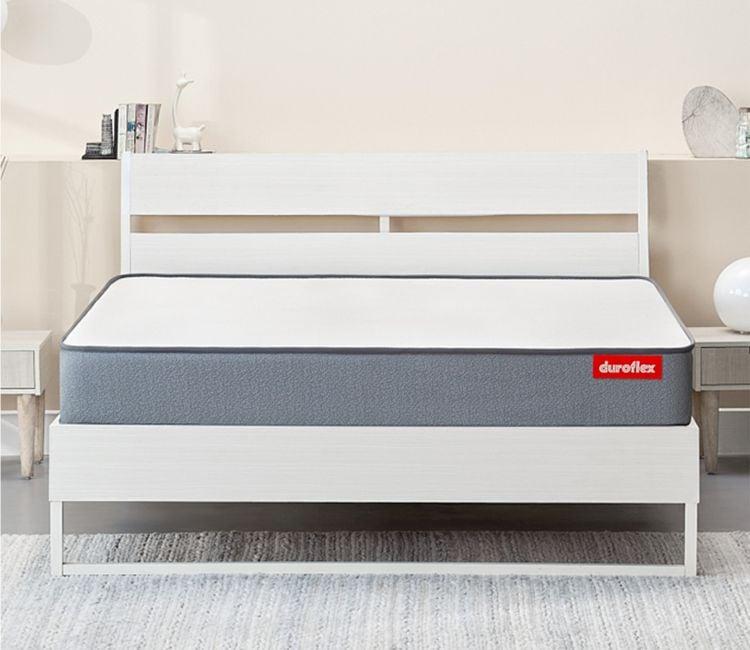Getting quality sleep isn’t just about the number of hours you rest—it’s about how well your mattress supports your body in your natural sleep position. Whether you sleep on your side, back, stomach, or shift throughout the night, choosing the right mattress can make all the difference in waking up refreshed and pain-free. In this 2025 guide, we break down how to choose the ideal mattress based on your sleep style, so you can invest in comfort, support, and better health.
1. Why Sleep Position Matters
Your sleep position affects spinal alignment, pressure points, and overall sleep quality. A mattress that’s too soft or too firm for your preferred sleep posture can lead to discomfort, back pain, and restless nights. That’s why tailoring your mattress choice to your sleep position is key to getting restorative sleep.
2. For Side Sleepers: Soft to Medium-Firm Support
Best mattress type: Memory foam or hybrid with plush top layers.
Side sleeping is one of the most common positions, especially for people with back or joint pain. However, it puts pressure on the shoulders and hips. A soft to medium-firm mattress helps cushion these pressure points while supporting spinal alignment.
-
Memory foam contours to your body shape, offering excellent pressure relief.
-
Hybrid mattresses with a soft top layer and coil support base offer balanced comfort and bounce.
What to avoid: Very firm mattresses can cause discomfort in the shoulders and hips, leading to numbness or tossing and turning.
3. For Back Sleepers: Medium to Firm Support
Best mattress type: Latex, hybrid, or memory foam with zoned support.
Back sleepers need a mattress that supports the natural curve of the spine. Too soft, and your hips sink; too firm, and your lower back lacks support. A medium to firm mattress helps evenly distribute body weight and prevents back strain.
-
Latex mattresses offer responsive support and airflow, making them a great eco-friendly and durable choice.
-
Zoned mattresses provide targeted support for the lumbar region while keeping your spine aligned.
What to avoid: Soft mattresses can create lower back sagging, increasing pressure and discomfort.
4. For Stomach Sleepers: Firm and Supportive Surface
Best mattress type: Firm foam or innerspring mattress.
Stomach sleeping is generally not recommended as it places strain on the neck and lower back. However, if it’s your preferred position, choose a firm mattress that prevents your torso from sinking and misaligning the spine.
-
Firm foam or innerspring mattresses help maintain an even surface to keep your hips level.
-
Thin pillows or no pillows at all are also recommended to prevent neck strain.
What to avoid: Plush or soft mattresses cause the midsection to sink, leading to back and neck pain over time.
5. For Combination Sleepers: Responsive and Adaptive Comfort
Best mattress type: Hybrid or responsive latex.
Combination sleepers—those who switch positions throughout the night—need a mattress that balances support and responsiveness. Look for a medium-firm mattress that adapts to movement and keeps the spine aligned in all positions.
-
Hybrid mattresses combine coils and foam to offer both bounce and support.
-
Natural latex offers quick responsiveness and keeps you cool at night.
What to avoid: Mattresses that are too soft may cause you to sink, making it harder to shift positions easily.
6. Mattress Features to Consider in 2025
Modern mattress designs come with advanced features to enhance sleep quality regardless of position:
-
Zoned Support Technology: Provides customized firmness for different body zones like shoulders, hips, and lower back.
-
Cooling Materials: Gel-infused foams, breathable covers, and open-cell technology to prevent overheating.
-
Motion Isolation: Essential for couples with different sleep positions and schedules—minimizes movement transfer.
-
Adjustable Bases Compatibility: Great for sleepers who want to raise or lower specific parts of the bed for optimal comfort.
7. Choosing the Right Firmness Level
Mattress firmness is subjective but can be guided by both sleep position and body weight:
-
Lightweight sleepers (<60 kg): May find medium-soft mattresses more comfortable.
-
Average-weight sleepers (60–100 kg): Medium to medium-firm mattresses provide ideal support.
-
Heavier sleepers (>100 kg): A firm or high-density hybrid mattress helps maintain support without sagging.
Always check for mattress trial periods (commonly 100 nights) so you can test the comfort level and return if it doesn't match your needs.
Final Thoughts
In 2025, with so many mattress technologies and options available, finding the right one tailored to your sleep position is easier than ever—if you know what to look for. Your bed mattress should complement your sleep habits, relieve pressure points, and support healthy spinal alignment.
By matching your mattress choice to your sleeping style—be it side, back, stomach, or combination—you can unlock more restful nights and energized mornings. Invest in a mattress that understands your body, and you’ll feel the difference every single day.
